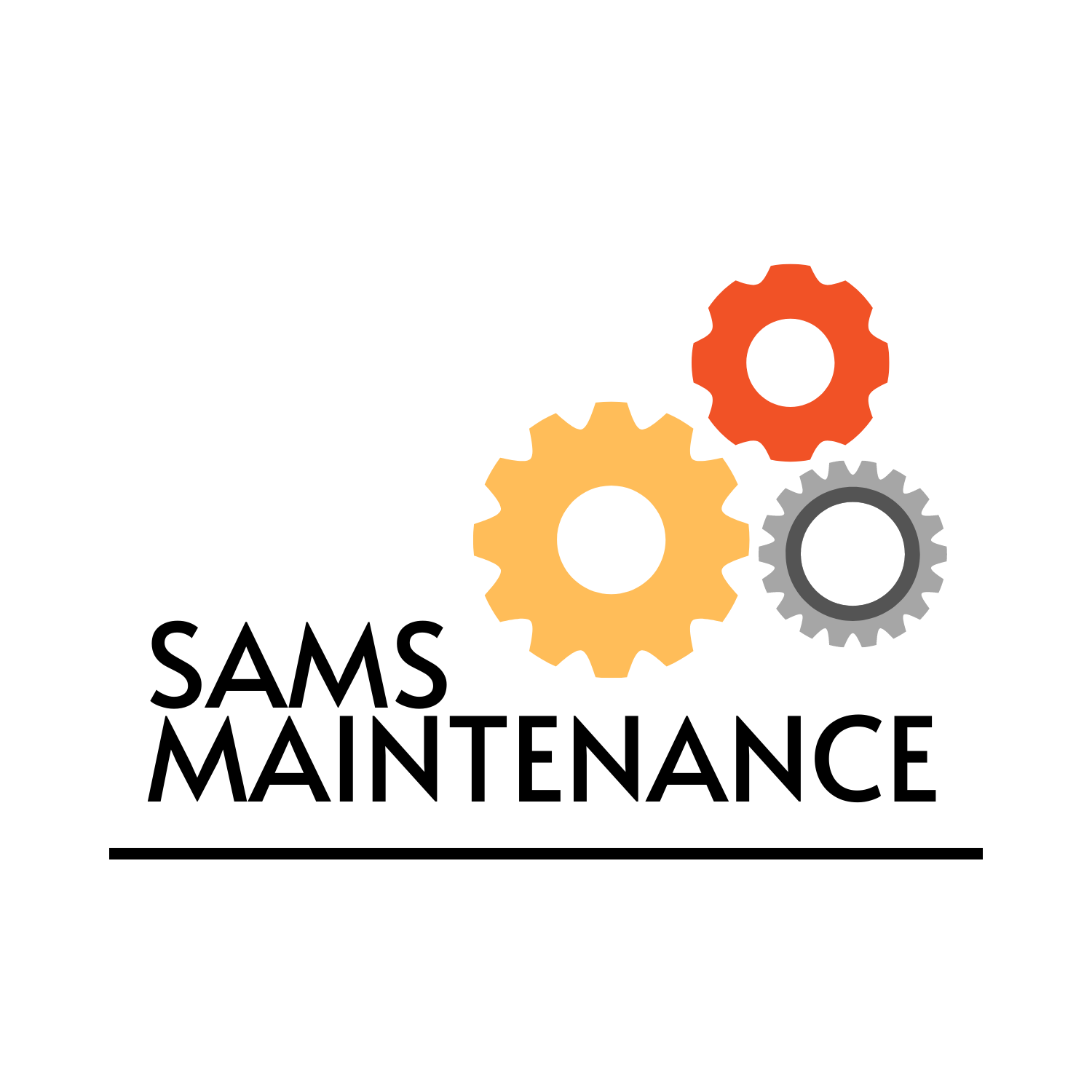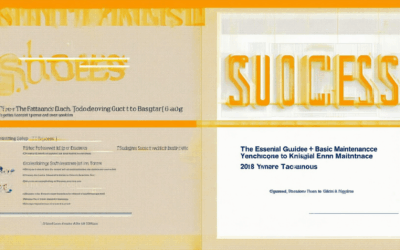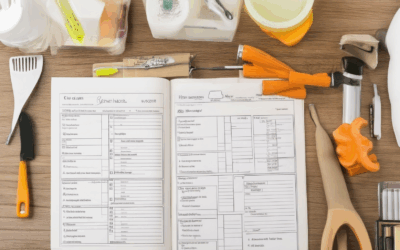Homeownership comes with its fair share of challenges, and one of the most frustrating issues is the constant battle against unexpected repair costs. From leaky pipes to faulty appliances, costly repairs can leave homeowners feeling overwhelmed. However, there’s a powerful tool in every homeowner’s arsenal: DIY maintenance advice. By taking proactive steps, you can prevent minor issues from escalating into major problems, saving yourself both time and money in the long run. Whether it’s fixing a leaky faucet or updating outdated electrical outlets, DIY maintenance offers a cost-effective way to keep your home in prime condition. With the right knowledge and tools, anyone can master the basics of home upkeep, transforming your approach to maintenance and ensuring your property stays in excellent shape for years to come.
Key Takeaways
– Regular Inspections: Schedule checks on plumbing, electrical systems, and HVAC to prevent costly issues.
– Gutter Cleaning: Keep gutters clear to avoid water damage and foundation problems.
– Appliance Maintenance: Clean and sanitize major appliances regularly to extend their lifespan.
– Flooring Care: Refinish hardwood floors and deep clean carpets to maintain appearance and health.
– Foundation Checks: Inspect for cracks and address issues early to prevent structural damage.
– Heating and Cooling Systems: Change filters monthly and ensure proper ventilation to prevent hazards.
– Electrical Safety: Look for tripping outlets and consider professional help for complex issues.
– Plumbing Pipe Checks: Inspect for leaks and know how to shut off the water supply.
– Exterior Surfaces: Replace missing shingles and repaint to prevent peeling and damage.
– Fire Safety: Test smoke detectors monthly and keep fire extinguishers accessible.
– Landscaping: Regularly mow, prune, and remove dead trees to maintain curb appeal.
– Window and Door Maintenance: Clean tracks and lubricate hinges for proper function and energy efficiency.
– Professional Inspections: Annual checks by trained professionals can spot hidden issues.

Best DIY Maintenance Tips for Keeping Your Home in Great Shape
- Check for Leaks and Water Damage: Inspect pipes, faucets, and fixtures regularly. Address any drips or water damage immediately to prevent mold growth and costly repairs. Learn more about leak detection.
- Clean and Maintain Gutters: Remove debris like leaves and dirt from gutters twice a year. Ensure downspouts are clear to direct water away from your home’s foundation. Gutter maintenance guide.
- Test Smoke Detectors and Carbon Monoxide Sensors: Monthly checks ensure your home is protected against fire hazards. Replace batteries as needed and follow manufacturer guidelines. Smoke detector maintenance tips.
- Inspect Grout and Tiles: Look for cracks or loose tiles in bathrooms and kitchens. Replenish grout and sealant as necessary to maintain a clean and waterproof surface. Tile care guide.
- Service HVAC Systems: Schedule regular check-ups for your furnace, air conditioner, and ductwork. Clean or replace filters monthly to ensure efficient operation. HVAC maintenance tips.
- Examine Windows and Doors: Check for drafts or damaged seals. Tighten hardware and consider replacing old windows to improve energy efficiency. Window care guide.
- Trim Trees and Shrubs: Regular pruning keeps landscapes tidy and prevents damage to your home. Monitor tree health to avoid potential issues like fallen branches. Landscaping maintenance tips.
- Inspect Roofing Materials: Look for missing shingles or wear and tear. Address issues promptly to prevent leaks and structural damage. Roof inspection guide.
- Test Appliance Functionality: Run major appliances like refrigerators, ovens, and dishwashers monthly. Ensure they operate efficiently and safely. Appliance care tips.
Essential DIY Maintenance Tips Every Homeowner Should Know
- Check for Leaks: Regularly inspect pipes, faucets, and hoses for signs of wear or damage. Address issues promptly to prevent costly water damage. Why it matters: Even small leaks can lead to significant water damage over time.
- Clean Gutters and Downspouts: Remove debris like leaves and dirt to ensure proper drainage. This prevents clogs and water overflow during rainstorms. Why it matters: Clogged gutters can cause water to pool near your home’s foundation, leading to mold and structural issues.
- Inspect Windows and Doors: Look for cracks or gaps that may allow pests or drafts. Seal openings to improve energy efficiency and comfort. Why it matters: Efficient windows and doors contribute to better indoor air quality and lower energy bills.
- Test Smoke Detectors and Fire Extinguishers: Ensure these critical safety devices are working properly. Replace old batteries and check expiration dates. Why it matters: Fire safety is a top priority for any homeowner, and regular checks ensure your family’s protection.
- Service HVAC Systems: Schedule regular maintenance for your heating, ventilation, and cooling systems. Clean or replace filters and check for wear. Why it matters: A well-maintained HVAC system operates more efficiently, reducing energy costs and extending its lifespan.
- Check for Trip Hazards: Look for loose rugs, cords, or objects that might cause trips. Secure these items to create a safer living environment. Why it matters: Preventing accidents is crucial for both safety and peace of mind.
- Inspect Roofing Materials: Check for missing shingles, cracked tiles, or peeling paint. Address roof issues early to avoid further damage. Why it matters: A damaged roof can lead to interior water damage and structural instability.
- Clean and Maintain Driveways and Walkways: Remove weeds, cracks, and debris to ensure safe passage and prevent tripping hazards. Why it matters: Maintaining these areas enhances both curb appeal and safety.
- Organize Storage Areas: Tidy up basements, garages, and attics to make space for new items and reduce clutter. Why it matters: Proper storage prevents damage to belongings and makes it easier to find items when needed.
- Update Landscaping: Trim trees, bushes, and lawn edges. Plant native vegetation to conserve water and enhance your property’s appearance. Why it matters: Well-maintained landscaping boosts curb appeal and can increase your home’s value.

Top DIY Maintenance Tips for Keeping Your Home in Excellent Condition
Keeping your home in top shape requires consistent effort and attention. Here are some essential DIY maintenance tips to help you achieve this:
Cleaning and Organizing
- Vacuum and mop floors regularly: Dust and dirt accumulation can affect air quality and lead to premature wear on flooring.
- Dust furniture and surfaces: Use microfiber cloths or dampened sponges to remove dust and allergens.
- Check for spills and stains: Address them promptly to prevent discoloration and odors.
Plumbing and Water Systems
- Inspect pipes for leaks: Look for visible signs of damage or wear, especially near fixtures and hoses.
- Flush water traps: Regularly clean out toilet tanks to prevent clogs and bad smells.
- Test water pressure: Adjust faucet aerators to maintain optimal flow and reduce water waste.
Electrical Systems
- Check for tripped circuits: Reset GFCIs if they trip frequently, and replace old outlets as needed.
- Inspect cords and plugs: Ensure they’re in good condition and avoid overloading circuits.
- Test smoke detectors: Replace batteries annually and ensure they’re functioning properly.
Heating, Ventilation, and Air Conditioning (HVAC)
- Change filters monthly: Dirty filters can strain your system and reduce efficiency.
- Schedule regular tune-ups: Professional inspections can catch potential issues before they become costly repairs.
- Inspect vents for blockages: Clear ducts to ensure proper airflow and energy efficiency.
Landscape and Outdoor Maintenance
- Trim trees and bushes: Keep greenery trimmed to prevent damage to your home or power lines.
- Check for dead branches: Remove fallen limbs to avoid hazards and potential damage during storms.
- Inspect outdoor lighting: Replace bulbs as needed and ensure fixtures are secure.
By following these tips, you can maintain your home’s condition and ensure it remains in excellent shape for years to come. Remember to visit Sams Maintenance for additional resources and expert advice!

DIY Maintenance Advice Every Homeowner Should Know
Homeownership requires ongoing maintenance to keep your property in great shape. Here are essential DIY tips every homeowner should know:
- Inspect Foundation Regularly : Check for cracks, unevenness, or signs of wear. Addressing foundation issues early prevents costly repairs.
- Clean and Maintain Gutter Systems : Remove debris and install gutter guards to ensure proper drainage and protect against water damage.
- Maintain Major Appliances : Clean and sanitize refrigerators, dishwashers, and ovens. Replace worn-out parts and check for leaks promptly.
- Care for Flooring : Refinish hardwood floors when necessary and deep clean carpets to prevent stains and odors.
- Check Heating and Cooling Systems : Change filters monthly and ensure proper ventilation for gas ranges to prevent carbon monoxide risks.
- Inspect Electrical Systems : Look for tripping outlets and inspect wiring. Consider professional help for complex issues.
- Monitor Plumbing Pipes : Check for leaks and know how to shut off the water supply. Replace old pipes when needed.
- Examine Exterior Surfaces : Replace missing shingles and repaint exterior surfaces to prevent peeling and damage.
- Prioritize Fire Safety : Test smoke detectors monthly and keep fire extinguishers accessible.
- Schedule System Inspections : Have HVAC, plumbing, and major systems inspected annually to catch potential issues early.
- Keep Landscaping in Check : Regularly mow, prune, and remove dead trees to maintain curb appeal and proper drainage.
- Manage Windows and Doors : Clean window tracks and lubricate hinges to ensure proper function and energy efficiency.
- Plan for Annual Professional Inspections : A trained eye can spot issues you might miss, ensuring your home remains in top condition.
What DIY Maintenance Advice Can Help Prevent Costly Home Repairs?
Preventing costly home repairs through DIY maintenance requires consistent effort and knowledge of common issues. Here are proven strategies to keep your home in great shape:
- Regular Inspections: Schedule regular checks on critical systems like plumbing, electrical, and HVAC. Catch small issues early to avoid costly replacements.
- Gutter Cleaning: Clogged gutters can lead to water damage and foundation issues. Clean them twice a year to maintain proper drainage.
- Check Pipes and Faucets: Look for leaks or corrosion. Replace washers and fix minor cracks to prevent pipe damage and water waste.
- Test Smoke Detectors and Fire Safety Systems: Regularly test smoke detectors and ensure fire extinguishers are functional. This simple step can prevent fires caused by electrical issues.
- Inspect Roof and Chimneys: Check for missing shingles or damaged flashing. Schedule chimney cleaning to prevent blockages that could lead to fires or structural damage.
- Trim Trees and Remove Debris: Overhanging branches and yard debris can cause damage during storms. Keep your property clear to reduce repair risks.
- Check Foundation for Cracks: Small cracks in the foundation can indicate underlying issues. Sealing them early prevents more severe damage.
- Service Appliances Regularly: Schedule routine maintenance for HVAC, refrigerators, and major appliances. This extends their lifespan and prevents breakdowns.
- Update Outdated Systems: Replace outdated electrical systems or plumbing to meet safety standards and prevent accidents or inefficiencies.
By incorporating these DIY maintenance tips into your routine, you can save money and avoid the stress of unexpected repair costs. Prioritize regular inspections and address issues promptly to keep your home in excellent condition.
- Explore More DIY Tips
- Plumbing Guide
- Electrical Safety
- HVAC Maintenance

Effective DIY Maintenance for Your Home
Keeping your home in great shape doesn’t have to be overwhelming. With the right approach, you can tackle DIY maintenance projects with confidence. Here are some practical tips to help you maintain your home efficiently:
- Start Small and Stay Consistent – Begin with manageable tasks like changing air filters or organizing storage spaces. Consistency helps prevent bigger issues down the line.
- Prioritize Preventative Maintenance – Regular checks on systems like plumbing, electrical outlets, and HVAC can save you from costly repairs later. Schedule these check-ups quarterly.
- Update and Replace When Necessary – Know when it’s time to replace worn-out items. For example, old caulking or weatherstripping can significantly improve energy efficiency and comfort.
- Enhance Energy Efficiency – Upgrade to energy-saving appliances and fixtures. Install low-flow fixtures to reduce water usage and consider adding insulation to windows to keep your home more comfortable.
- Regularly Clean and Inspect – Dust, vacuum, and clean gutters to maintain airflow and prevent buildup that can lead to damage. Inspect crawl spaces and attics for signs of pests or moisture issues.
- Secure Your Home Against Weather – Check for loose shingles or damaged siding and repair them promptly. Ensure gutters are clear to direct rainwater away from your home’s foundation.
- Test and Maintain Appliances – Annual testing of smoke detectors, carbon monoxide detectors, and fire extinguishers is crucial. Lubricate garage doors and test stairlifts to ensure smooth operation.
- Stay Organized with Tools and Supplies – Keep a well-stocked tool kit and organize essentials like spare keys, first aid supplies, and cleaning products in easily accessible locations.
- Consult Resources for Guidance – Utilize trusted online resources like Sams Maintenance for detailed guides and expert advice on various home maintenance tasks.
By following these tips, you can maintain your home effectively and enjoy a comfortable living environment. Remember to take it one step at a time and always prioritize safety when handling DIY projects.




0 Comments